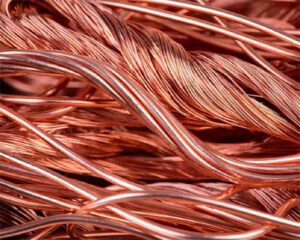- India joins China and other nations that are rapidly expanding production of copper, a metal crucial for transition away from fossil fuels
- For Phase-1, capacity of 0.5 million tonnes per annum, KCL achieved financial closure through a syndicated club loan in June 2022
- For FY23 (April 2022 to March 2023 fiscal), India imported a record 1,81,000 tonnes of copper
- Adani’s copper plant comes at a time when Vedanta Ltd is seeking to reopen a long-shuttered 400,000 tonnes plant at Tuticorin in Tamil Nadu
NE BUSINESS BUREAU
AHMEDABAD, FEB 4
Aiming to make the nation AtmaNirbhar Bharat, Kutch Copper Ltd (KCL), a subsidiary of the group’s flagship Adani Enterprises Ltd (AEL), the world’s largest single-location copper manufacturing plant at Mundra in Gujarat, will start operations of the first phase by March-end and full-scale 1 million tonnes capacity by FY29 (March 2029). This will help cut India’s dependence on imports and aid energy transition, reported the news agency PTI.

The USD 1.2-billion facility will start operations of the first phase by March-end and full-scale 1 million tonnes capacity by FY29 (March 2029), two sources with knowledge of the matter said.
India joins China and other nations that are rapidly expanding production of copper, a metal crucial for transition away from fossil fuels. Technologies critical to the energy transition like electric vehicles (EVs), charging infrastructure, solar photovoltaics (PV), wind and batteries, all require copper.
For Phase-1, capacity of 0.5 million tonnes per annum, KCL achieved financial closure through a syndicated club loan in June 2022.
“Adani wants to become a global leader in the copper business, leveraging the Adani Group’s strong position in resource trading, logistics, renewable power, and infrastructure,” one of the sources said. “Their aim is to be the world’s largest copper smelting complex by 2030.”
He said India’s per capita copper consumption is estimated around 0.6 kg compared to the global average of 3.2 kg.
“India’s drive towards clean energy systems, increasing penetration of electric vehicles and a host of associated applications are expected to double the domestic copper demand by 2030.”
“The Adani Group is investing heavily in energy transition, in which copper will play a vital role. It is expanding into adjacent areas of its current capabilities, which makes the copper business a strategic fit,” he said.
Copper is the third most used industrial metal after steel and aluminium, and its demand is rising on the back of fast-growing renewable energy, telecom and electric vehicle industries.
India’s copper production has been unable to meet this demand, and domestic supply disruptions have led to a higher dependency on imported copper.
India’s imports have been consistently on the rise for the past five years.
For FY23 (April 2022 to March 2023 fiscal), India imported a record 1,81,000 tonnes of copper, while exports plummeted to a record low of 30,000 tonnes, even lower than the Covid pandemic period, according to the data from the government.
The country is estimated to have consumed 7,50,000 tonnes of copper in FY23 (612 KT in FY22). The number is expected to rise to 1.7 million tonnes by 2027 on the back of huge demand from the green energy industry.
Global demand for copper from solar photovoltaic (PV) installations alone is estimated to double to 2.25 million tonnes in the current decade.
Adani group, which is rapidly growing its renewable portfolio, will be a significant consumer of the red metal.
Sources said Adani Group’s foray into copper manufacturing is a natural extension of its trading, mining, logistics, infrastructure, and manufacturing businesses. “We have a strong international presence to import copper concentrate as India does not produce enough.”
West coast, they said, provides Adani with an additional competitive advantage to cater seamlessly to domestic as well as international markets.
Kutch Copper will produce copper cathodes and rods as well as valuable byproducts such as gold, silver, selenium and platinum, they said.
Additionally, the integrated complex will produce sulphuric acid, which is a key raw material for manufacturing phosphatic fertilizers, detergents, pharmaceuticals, speciality chemicals, paper and sugar bleaching, and water treatment. India imports roughly two million tonnes of sulphuric acid.
The plant will produce 500,000 tonnes of refined copper per annum in Phase I with byproducts — nearly 25 tonnes of gold, 250 tonnes of silver, 1.5 million tonnes of sulphuric acid, and 250,000 tonnes of phosphoric acid. The Phase II expansion will increase the refined copper capacity up to 1 million tonnes per annum, sources said.
“The copper complex construction (Phase I) is in the advanced stages, and the plant is expected to be operational in 2024,” the second source said.
Adani’s copper plant comes at a time when Vedanta Ltd is seeking to reopen a long-shuttered 400,000 tonnes plant at Tuticorin in Tamil Nadu. The country’s biggest copper smelter is currently operated by Hindalco Industries Ltd, which also has a capacity of 0.5 million tonnes.
“Its waste-to-value strategy envisages tapping into adjacencies and creating markets for copper slag in road construction, cement, and other applications,” the second source said.












